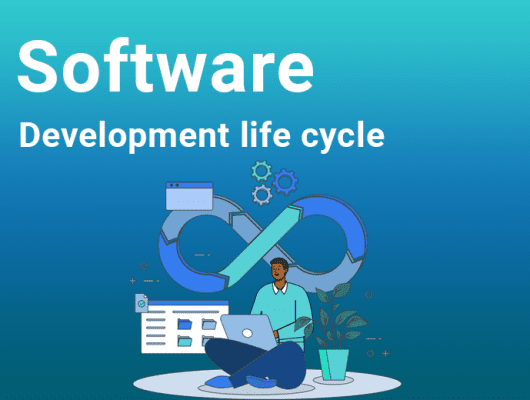
Estimating Return on Investment in mobile app development
Mobile app ROI estimation is pivotal for businesses to evaluate investing in an app project that will generate positive financial returns. ROI calculations assist with analyzing the financial gains versus the expenses incurred while making the mobile application. Such assessment guides investment allocation and strategy adjustments to maximize profit.
But how do you measure ROI for your mobile app project? What parameters should be taken into account to prepare a reliable measurement? Is it easy for companies to identify their weaknesses during the financial appraisal of their mobile apps? Such questions are crucial for anyone wanting to touch on app development’s monetary aspect.
If you are looking for appropriately estimating return on Investment in mobile app development, this guide is for you. So, digger deeper with us to uncover all the emerging questions related to return on investment
Let’s begin,
Table of Contents
1. What is ROI in Mobile App Development?
Mobile application ROI is the amount of money built for each dollar spent developing and promoting an app. The income from an app and the costs associated with creating, promoting, and maintaining it directly impact this ROI.
It acts as a mirror to showcase the outcomes of your hard work in creating features for apps, marketing, and other services. This “mirror,” known as ROI, frequently highlights your weaknesses in app development or marketing initiatives.
Prior to the app idea moving through the implementation phase, the ROI is assessed in the context of mobile app projects, taking into account several distinct elements.
Therefore, ROI is evaluated based on the primary parameters or KPIs once the app product has been released and begins to acquire traction with consumers.
Moreover, mobile app ROI is essential since it ensures the reliability of the app idea, potential, and financial stability. Note that every app starts as a storefront or a business solution, and the goal is to generate steady revenue from its user base.
2. Formula Use to Estimating Return on Investment in mobile app development
Developing a mobile application for your online business is an excellent idea if you want to see business success. Nevertheless, generating money and a positive return on investment (ROI) is the ultimate goal of any firm. The same applies to how much of a return you receive from a mobile app.
Thus, tracking the progress of your app development efforts and financial success requires you to compute mobile app ROI. Here is the straightforward formula for figuring out the return on investment.
ROI = (Final Value – Initial Value) of investment/ Cost of Investment * 100%
3. Key Metrics and Formula of ROI Measurement and Estimation

Now, after understanding what ROI actually is, let’s review the important key metrics and formulas related to the ROI of mobile apps.
However, we need to take a quick look at these measures before discussing the different approaches and essential technical know-how for calculating and assessing ROI.
3.1. Cost Per Install ( CPI)
One popular measure used in digital advertising campaigns for mobile apps is Cost Per Install (CPI). This measure attempts to highlight the expense of getting a user to download and install the application. This computation involves splitting the overall campaign expenditure on the number of newly installed apps.
3.2. Lifetime Value (LTV)
The most critical measure for determining an app product’s financial value is its lifetime value or LTV. This measure is crucial for assessing the long-term value that an app creates, independent of how many downloads or installs it receives.
Additionally, if the quantity of installs matters to you, this metric will evaluate you based on virality, finances, and user retention. Remember that the app is likely to have a greater LTV when
- Users use it for an extended period
- Converts users consistently from specific consumers
- Attracts number of users.
Note that the straightforward formula to compute LTV is
LTV = (1 + K) X ARPU
In this case, “1” denotes the total number of users the User brought to the app, while “ARPU” represents the average revenue per User.
3.3. Average Revenue Per User ( ARPU)
Average income per user, or ARPU, is another important indicator of ROI. You can determine it by simply dividing the total income made by the program by the number of installs.
4. Detailed insight into How to calculate your ROI
Let’s talk about the particular processes for figuring out the ROI of a mobile app.
4.1. Identify your goals.
Establishing your business goals from a mobile app is the most crucial phase. Before beginning the app development process, developing your short- and long-term goals is essential. After a clear plan and objective, you should work with your app development team to translate your ideas into practical processes.
Additionally, at every development level, app developers need to be extremely clear and knowledgeable about the KPIs and business objectives. This is essential for wise financial investment.
4.2. Determine the total app development cost
Exercise extreme caution when investing your money in the growth process. Therefore, Consider the following expenses as a part of your app development process.
- Cost of developing an app
- Cost of UI/UX development
- Cost of testing
- Total cost of deployment
- Extended expenses
An app will also incur maintenance expenses after its final launch, regarded as long-term costs.
5. Key Insights in Measuring ROI for Mobile Apps
Now that we understand the essential indicators for assessing the app’s ROI from various perspectives let’s review how to use these metrics or parameters.
5.1. Detail measurement Plan
The most important thing is to use these metrics with a precise and in-depth measurement plan. You must follow the instructions below to calculate app ROI and use the important measurement KPIs.
- Include the app product’s short- and long-term commercial objectives in a concise document.
- Be aware of every tactical move and approach you will use to accomplish these goals.
- Choose the most critical measures to use as KPIs (key performance indicators).
- Understand how to separate and categorize app data properly.
- Know which KPIs to use and where to put them to get the most outstanding results.
- Determine the KPI targets by considering the revenue streams.
5.2. Estimating the Lifetime Value of the customers
Lifetime Value, or LTV, is the total amount of money gained by a single user during his or her app usage.
However, it is the total revenue an app user receives throughout his involvement. Additionally, if your app relies on a subscription model, you can use the LTV measure for long-term forecasting.
5.3. Cost Per Acquisition (CPA)
This is a straightforward indicator that highlights the total amount of money the app spends on acquiring new users. Many commercial organizations find this indicator useful in determining whether to launch a new app or increase their acquisition spending.
Moreover, app marketers have found success in reducing the cost of acquiring new users and improving acquisition results. They do this by offering free trials, discounts, and incentives. These strategies help attract new users.
Additionally, marketers compute the cost per acquisition (CPA) for distinct campaigns for app marketing or user acquisition.
Remember that, To find the CPA for a campaign, divide the total cost by the number of users it attracted.
Conclusion
It’s common knowledge that there are countless apps accessible on both the Android Play Store and the iOS App Store. Some of these apps need to make more money to make ends meet. So, it is necessary to highlight income generation and measures connected to return on investment.
Over the coming years, the market for mobile app development will only get bigger. Even yet, there will be more rivalry for app market visibility, audience engagement, company conversion, and money generation. Numerous app efforts will benefit from these tried-and-true strategies to get beyond their financial obstacles.
Let’s say you’re new and would like assistance improving your mobile app’s return on investment. And if so, consult Onyxtec, where we help you to understand what actually the ROI and how it helps you to increase your user retention.
FAQ
a. Are you trying to find an app development company that is reputable and affordable?
Try OnyxTec if you’re looking for an app development firm that can help you create a feature-rich mobile app. OnyxTec is an app development company that provides a smooth user interface. It helps transform your online store into a feature-rich mobile app creator so that anyone, even those without coding experience, can create and modify apps solely. Last but not the least, it also helps raise your app’s return on investment.
b. What is a decent ROI ratio?
A healthy ROI ratio is one in which returns match or surpass the investment costs. It should be at least 100%.
c. What does a 30% return on investment mean?
A 30% ROI indicates that the program generates $0.30 in profit for every $1 invested.
d. Is an ROI of 80% sound?
Yes, an 80% ROI is excellent; for every $1 spent, the program makes $0.80 in profit.




